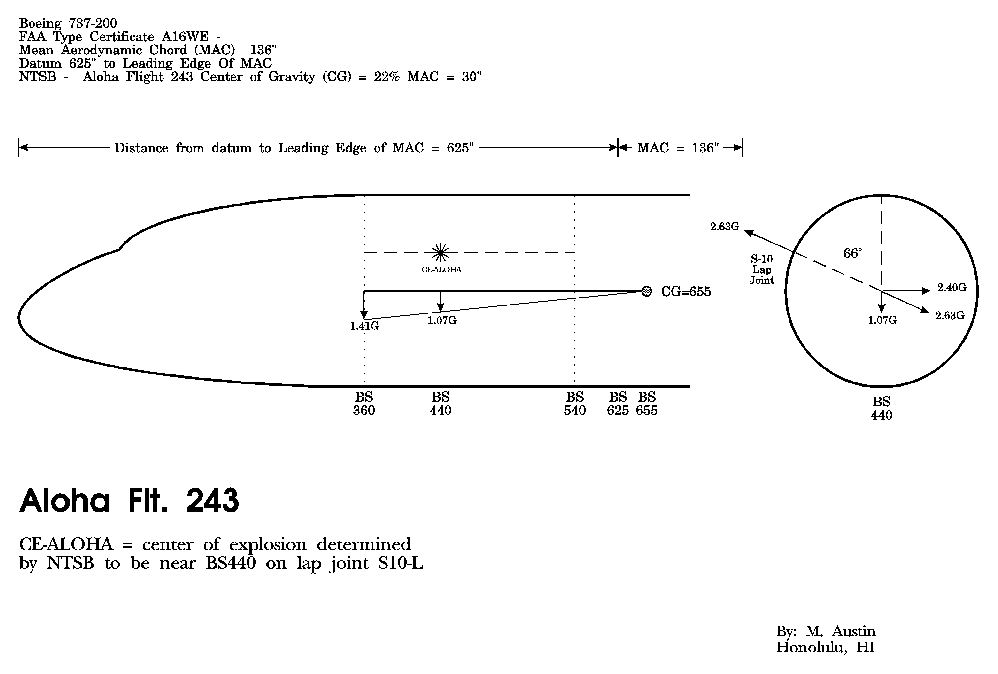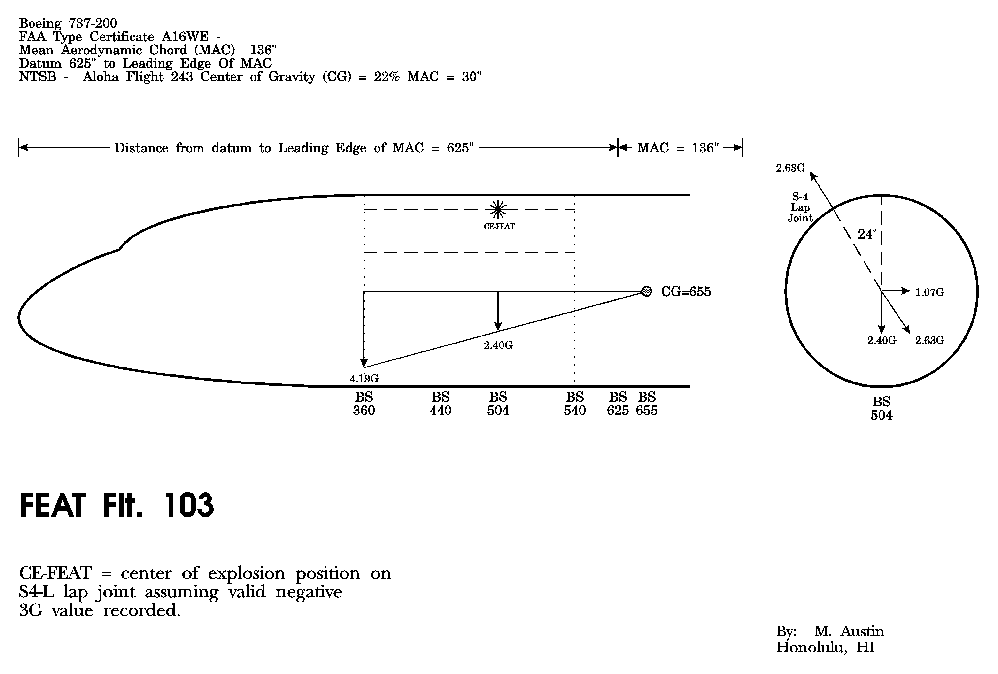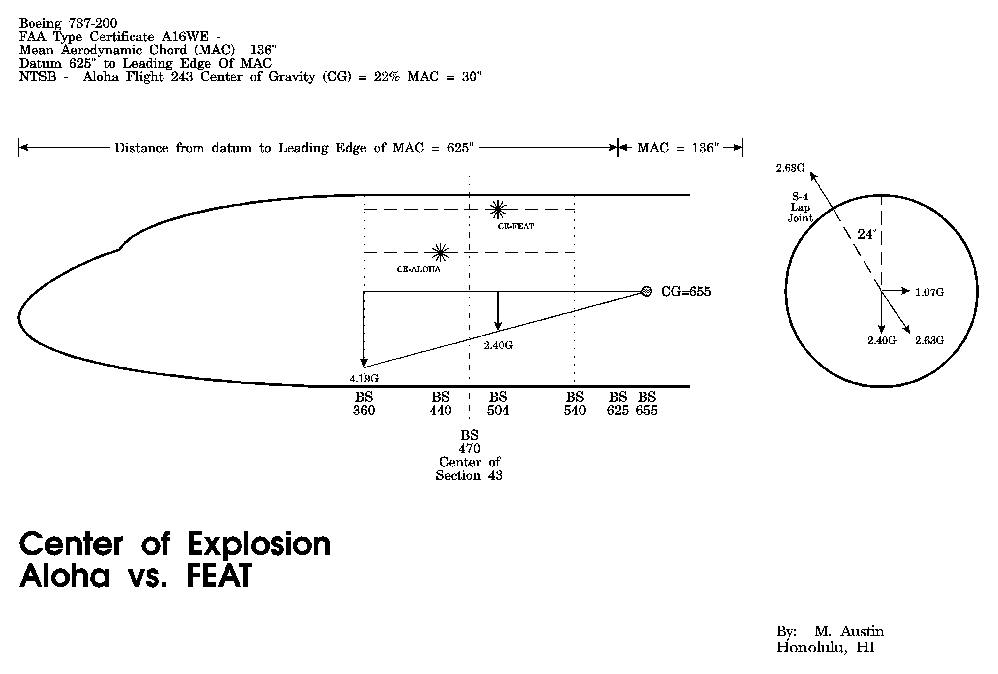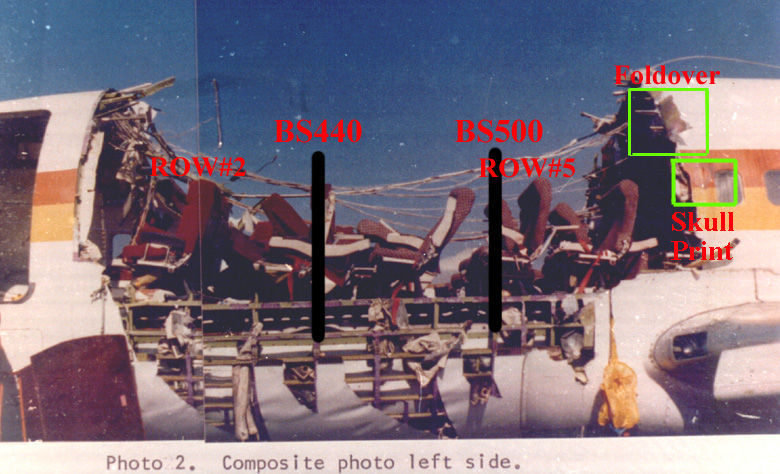
A 737-200 flying at 300 kts has a rocket motor mounted vertically up at its nose. With a high enough thrust, in a one second time frame, the aircraft could be rotated exactly 90 such that the nose is pointed directly down. Since, in this one second time frame, we have increased the cross-sectional area in the direction of motion many fold, the entire aircraft is experiencing a HUGE negative G reaction which is off the chart of the FDR. Now that we have destroyed one 737, on the next test aircraft we mount a nose cone rocket motor with only one half the thrust. On rocket motor burn, the thrust only forces the nose down 45 . However, the rapid increase in cross-sectional area again induces a large negative G recording. By varying the thrust, or with a constant thrust rocket motor, varying the position along the longitudinal center line, this experiment should be able to reproduce on the FDR any value of negative G, at will. Conversely, any value of positive G could be reproduced by facing the rocket motor downward.
The air escaping from the ruptured fuselage is equivalent to the thrust from our hypothetical rocket motor. Since the two subject aircraft are virtually identical, the velocity and mass of the escaping air may be assumed equal and providing equal thrust. The accompanying drawings indicate the calculated center of explosion of the FEAT aircraft based on the negative G reading recorded on the flight data recorder. Furthermore, there was no indication of a defective accelerometer which should have registered a large POSITIVE G indication had the failure origin been in the lower lobe as reported.
The FEAT Report stated that the G force recorded on the flight data recorder was "outside the flight characteristics of the aircraft". Since the airplane 'could not possibly do that...' the investigators concluded therefore the data was erroneous and ignored the flight data G force track data throughout the rest of the investigation. The following diagrams show that an initial failure at BS504 on the S-4 Lap Joint would give exactly the negative 4G swing about the center of gravity of the aircraft as recorded. It should be noted that at the time of the Aloha accident in 1988, an FAA Airworthiness Directive was in place requiring mandatory inspections of the S-4 Lap Joints BUT NOT the S-10 Lap Joints.



